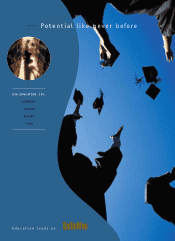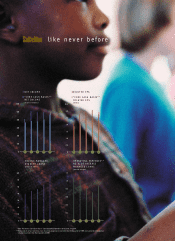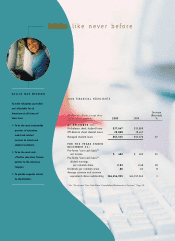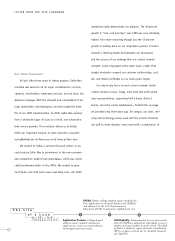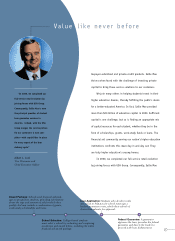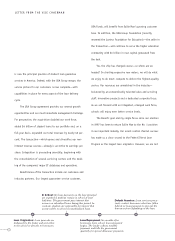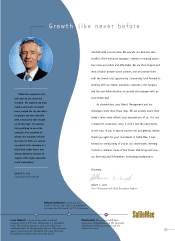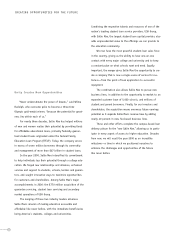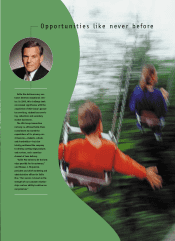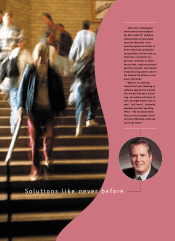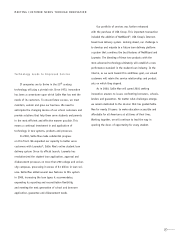Sallie Mae 2000 Annual Report Download - page 4
Download and view the complete annual report
Please find page 4 of the 2000 Sallie Mae annual report below. You can navigate through the pages in the report by either clicking on the pages listed below, or by using the keyword search tool below to find specific information within the annual report.
Dear Fellow Shareholder:
At last! After three years of steady progress, Sallie Mae
provided real value for all its major constituencies: schools,
students, shareholders, employees and last, but not least, the
American taxpayer. With the strength and commitment of our
loyal shareholders and employees, we have reaped the bene-
fits of our 1997 transformation. In 2000, Sallie Mae evolved
from a wholesale buyer of loans to a retail, one-school-at-a-
time service provider. This evolution allows us to better
fulfill our important mission: to make education accessible
and affordable for all Americans at all times of their lives.
We worked to imbue a customer-focused culture so we
could restore Sallie Mae to prominence in the new economic
and competitive student loan marketplace, which was drasti-
cally transformed earlier in the 1990s. We needed to grow
much faster and with much lower operating costs. Our 2000
operating results demonstrate our progress. The 18-percent
growth in “core cash earnings” over 1999 was very satisfying
indeed. Even more rewarding though was the 42-percent
growth in lending done on our origination systems (“control
channel”). Nothing better demonstrates our turnaround
and the success of our strategy than our control channel
strength. Loans originated at the retail level—rather than
bought wholesale—expand our customer relationships, cost
less and remain profitable on our books years longer.
Our day-to-day focus on each school customer builds
control channel success. Today, more than 200 professional
sales representatives, supporting half a dozen distinct
brands, serve the school marketplace—fivefold the coverage
we provided only three years ago. On campus, our sales, serv-
icing and technology teams work with the school’s financial
aid staff to meet students’ every need with a combination of
LETTER FROM THE VICE CHAIRMAN
The Life
of a Loan
SallieMae Application Process: College-bound
students must complete admissions
applications, secure recommendations
and prepare personal essays.
FAFSA: Future college students must complete the
Free Application for Federal Student Aid (FAFSA)
and submit it to the U.S. Department of
Education (DOE) to determine eligibility for aid.
Aid Eligibility: Approximately two-to-four weeks
after the FAFSA is submitted, individuals receive a
student aid report (SAR) from the DOE. The SAR
indicates a student’s expected family contribution
(EFC)—a figure schools use to calculate financial
aid eligibility.
123
2

